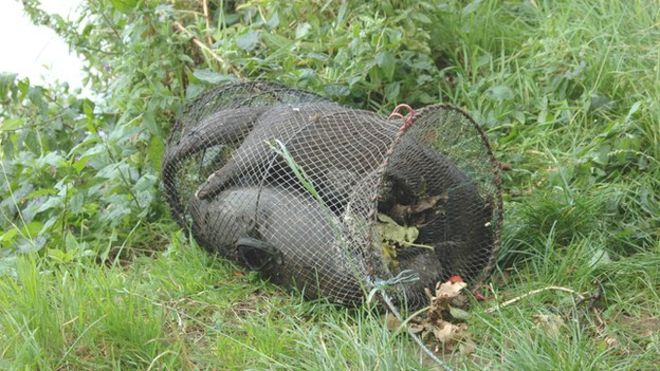Information Source: Prakash, (2013). Monitoring Otter Populations and Combating Poaching through Stakeholder Participation – A Status Report.
Human-Otter Conflict
In Asia, the human-otter conflict exists, largely due to aquaculture activities, where aquaculturists and fishermen cull otters.
Smooth-coated Otters are seen as pests and competitors by fishermen and aquaculturists. Otters eat fish from the fishing zones or fisheries, thus they are perceived as a threat to the income of fishermen and aquaculturists. Even though otters are protected by national law in several countries, certain local authorities encourage the culling of otters, in the interests of the fishermen and aquaculturists. Furthermore, otters which are accidentally entangled in fishing nets would drown overnight.

Drowned otters in a fishing net
Image Credit: BBC
Another factor in the decline of the otter population is the increasing use of dynamite fishing. Otters within the blast radius would get injured or worse, killed by the explosion. Not only does it cause harm to otters and other marine wildlife, it destroys coral reefs, which serves as a breeding and protection ground for fish. As a result, fish population declines and in turn, reducing the prey biomass of the otters, decreasing the availability of food and ultimately, negatively impacting the otter population.

Image Credit: Rohan Chakravarty